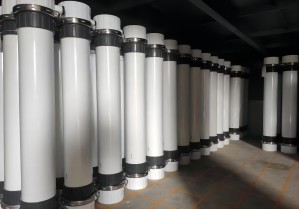Understanding Ultrafiltration (UF) and Its Micron Size
March 14, 2024
Introduction:
Ultrafiltration membranes for water treatment is a widely used filtration technology that operates on the principle of size exclusion. By employing membranes with specific pore sizes, UF can effectively separate particles and macromolecules based on their molecular weight. This article aims to provide an overview of UF and delve into the micron size range typically associated with this filtration technique.

Overview of Ultrafiltration:
Ultrafiltration is a pressure-driven separation process commonly employed in various industries, including water treatment, pharmaceuticals, food and beverage, and biotechnology. It offers a versatile and efficient means of separating and concentrating solutes, macromolecules, suspended solids, and colloidal particles from liquid streams.
Membrane Pore Size:
The key factor influencing the separation efficiency of hollow fiber ultrafiltration is the size of the membrane pores. UF membranes have a defined micron size range, typically ranging from 0.001 to 0.1 microns. The pore size of the membrane determines the size of the particles and molecules that can pass through it.
A pore size of 0.001 microns (1 nanometer) is at the lower end of the pvdf ultrafiltrafiltration Membrane spectrum and is capable of effectively removing viruses, bacteria, and most macromolecules. As the pore size increases, the UF membrane becomes more permeable to larger molecules, such as proteins, while still rejecting smaller molecules and particles.





 Language
Language




 Network Supported
Network Supported